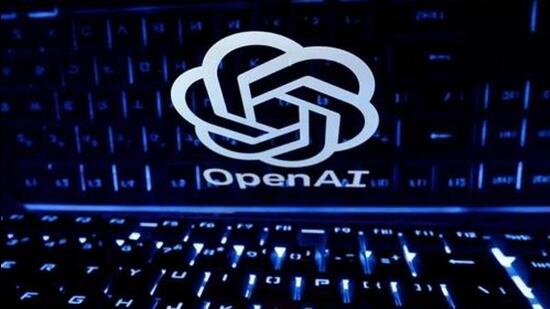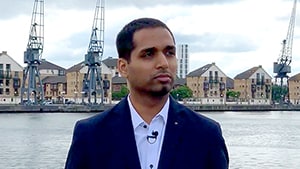If you expected a series of announcements yesterday may calm turbulent waters in the Silicon Valley, that hasn’t panned out as anticipated. If we are to summarise where things stand for now, it’s an attempt we must somehow make. Microsoft still doesn’t know if Sam Altman or Sam Brockman are indeed joining. All Satya Nadella could say in an interview with Bloomberg a few hours ago is, “they’re all in the process of joining”. A coup, which seemed akin to acquiring crucial parts of artificial intelligence start-up OpenAI for $0 and zero regulatory procedures, suddenly doesn’t really seem like one anymore.

The delay in signing up OpenAI’s currently ousted, former CEO Sam Altman could lie in fine details that some OpenAI board members may be in the process of a course-correction. In hope they could convince Altman to re-join. Hints first dropped by Ilya Sutskever, chief scientist and board member at OpenAI, in a post on X late yesterday evening.
A very public employee revolt, a 700 strong work force, could have something to do with this change of heart. Shades of this could be seen as OpenAI employees made “OpenAI is nothing without its people” trend on social network X.
Also Read: ‘History will forget you,’ this take on OpenAI firing Altman echos with netizens
“I deeply regret my participation in the board’s actions. I never intended to harm OpenAI. I love everything we’ve built together, and I will do everything I can to reunite the company,” it read, a clear change of heart from Ilya. Or so it would seem. As clear as it can be, in these turbulent times in the Silicon Valley. Nadella’s update that Altman and Brockman aren’t yet Microsoft employees, came a few hours after this post on X.
It is a complicated structure at OpenAI, which is what allowed the board the power to fire Altman. There are two parts that make OpenAI as a whole – a for-profit and a not-for-profit arm. Microsoft holds 49% share in the for-profit part of the business. In fact, this is a ‘capped profit’ model, that allows investments and venture capital possible. It’s a transition the start-up made in 2019. Thrive Capital, Khosla Ventures and Tiger Global Management are some of the other investors. Yet, it is the not-for-profit arm that controls most decision making at the company.
Quite how much Ilya can convince some other board members to tow his new line, remains to be seen. Other members on the OpenAI board are Adam D’Angelo, Tasha McCauley, Helen Toner. He’ll need to convince at least two out of the three, to carve a path for Altman’s possible return.
Even Nadella doesn’t know exactly how this will pan out. In another conversation with CNBC’s Jon Fortt, he mentioned Microsoft is “committed to OpenAI and Sam, irrespective of what configuration.” All he insisted was, irrespective of whether Altman and any other former or present OpenAI employees join Microsoft or not, the tech giant’s partnership with the AI company won’t change.
It cannot, either, since there’s a lot at stake for Microsoft.
Days earlier, at the Ignite 2023 keynote, Microsoft detailed further updates to its AI vision for Windows PCs and services including Microsoft 365. It’s GPT powered chatbot, Bing Chat, now rebranded as Copilot. Alongside, a new Copilot Studio conversational AI tool for organisations, allowing them to build their own, customised ‘copilots’. The underlier for this tech are OpenAI’s custom GPTs, which were announced earlier in the month.
It isn’t just Microsoft that needs a strong and focused OpenAI.
OpenAI’s GPT and Dall-E large language models (LLMs) are the backbone of many an AI product available today. The GPT conversational AI is versatile and customisable, used by popular services. These include Duolingo for some of their important features, Danish start-up Be My Eyes’ AI tool for individuals with visual difficulties, and by web browser DuckDuckGo to power a search tool. Just some examples.
Snap, an augmented reality (AR) company, has confirmed they’ll integrate GPT with their new lenses. ChatGPT Remote API will allow developers to integrate conversational AI in Lenses. Already, Snap’s My AI chatbot uses GPT for conversations, much like OpenAI’s own ChatGPT and Microsoft’s Copilot chatbot.
GPT and Dall-E find competition in Meta’s Llama 2, Google’s PaLM 2 and Amazon’s upcoming Alexa LLM.
Under Altman, OpenAI had been actively looking for partnerships as it wanted to create an open-source data set for training large language models. At the same time, the company’s focus trained on advanced artificial general intelligence (AGI). A system that’s generally smarter than humans. In February, Altman detailed AGI principles they are working with. These include balancing models’ good and bad tendencies, wider access to AGI and navigate inevitable “massive” risks as well as deploy less powerful version of the technology for greater accuracy.
The question that one must ponder over is – a set of board members and other employees who cannot foresee even every-short-term consequences of their actions, are they really the right people to build AGI for humanity?
